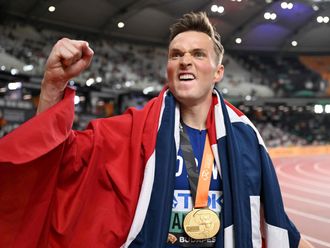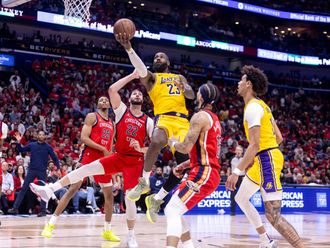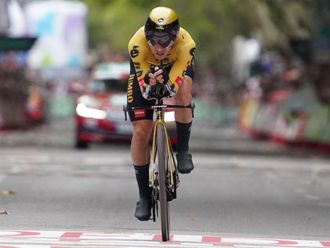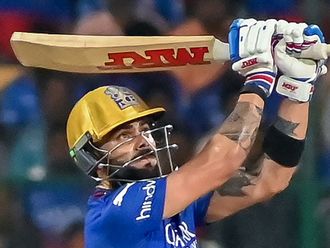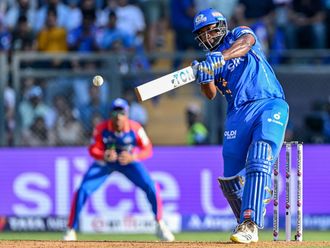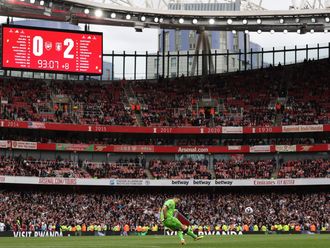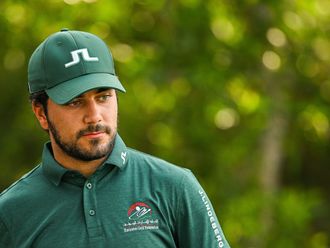Glasgow: The Commonwealth Games in Glasgow, which finished last Sunday, were outstanding. The sport has been top class, the organisation has been flawless and the atmosphere has been electric.
Even the sun made an appearance for much of the time, as hundreds of thousands of visitors packed out venues to watch athletes from the 71 competing nations and territories.
I was lucky enough to be part of this great gathering, hotfooting it from the World Junior Athletics Championships in Oregon, where the future looks bright for my sport both domestically and internationally.
Upon arriving in Glasgow I figured out pretty quickly that this was the place to be, even extending my stay so that I could watch more than I planned to and absorb a little more of the wonderful Glasgow hospitality.
I had followed from a distance the plans to turn Hampden into a world-class athletics track by raising the surface and supporting the newly-laid track on 6,000 structural steel stilts. But when I saw it up close for the first time, it was so much more impressive than the artist’s impression.
The transformation means the crowds are so close to the sporting action. The technology used is already being called ‘The Glasgow Solution’ in world athletics circles and there is widespread interest in the potential it creates for a range of venues to host world-class athletics events.
I met the engineer responsible for this innovative concept, who understandably took great pride in his work. The International Association of Athletics Federations will be opening discussions with him to utilise this creativity, particularly in countries that may not have the wherewithal to deliver most track and field meets.
Once the Hampden track was in place, this stadium looked more naturally a track-and-field stadium than a home for football. The sight lines were perfect and the roof design helped athletic performance.
But what made Hampden really special, and primarily for the 1,000-plus athletes who took to the track and field in pursuit of a medal, was the sheer exuberance of the crowd. The home nations would have expected the Hampden Roar behind them but here there was loud and enthusiastic support from the packed stadium for athletes from every part of the Commonwealth.
This brilliant venue is just one of the many success stories of these Games. Over at Ibrox, I joined a record-breaking 171,000 other people who, at various times, watched the fast and energetic rugby sevens. This is a thrilling sport which played out in a great party atmosphere.
In Glasgow more people watched rugby sevens live in one weekend than ever before. That is a great boost for the sport, both in Scotland and across the Commonwealth. But the atmosphere was not just limited to the stadiums.
Between track-and-field sessions I took a stroll through the centre of the city, where I was greeted by five Elvis lookalikes sweeping the streets and entertaining. This was a city that not only absorbed the games but became a theatrical backdrop.
From the banners and bunting to the crowds of animated sports fans, everywhere you looked, you could feel the excitement of the Games. Glasgow is a city that knows how to enjoy itself. There was an air of confidence, competence and pride everywhere, helped in no small part by the volunteers in their red tops and grey trousers.
The Clydesiders, the 15,000 army of volunteers who gave up their time to make the event go smoothly, were the smiling face of Glasgow 2014, bringing a universal welcome to all who arrived to be part of it. Glasgow 2014 has also underlined how incredibly relevant the Commonwealth Games are.
Some of the track and field here has been top drawer. It is often as difficult to win a title or a medal in some disciplines at a Commonwealth Games event as it is in many disciplines in World Championships and Olympic Games, particularly when you have two of the powerhouses of track and field, Kenya and Jamaica to contend with.
And so we saw in the men’s 800 metres. One of the highlights of the Olympics in London in 2012 was watching David Rudisha, of Kenya, win gold with Nijel Amos, of Botswana, taking silver.
At Hampden on Thursday night, Amos reversed the placings in a perfectly judged finish. Rudisha will be back, he just needs a few more races under his belt after an injury-strewn two years since London.
With this level of sporting competition, these 20th Commonwealth Games in Glasgow have been an extraordinary opportunity, as part of the British legacy, to inspire more young people, wherever they live, into sport. And there has been plenty of inspiration across all the sports. Young athletes from around the Commonwealth have excelled.
Take Erraid Davies, bronze medal winner in the SB9 100 metres breaststroke who, at only 13, is the youngest ever competitor from any country to win a Commonwealth Games medal. She struggled to walk at the age of four and started swimming after developing a rare hip condition. That kind of determination has made her a national hero.
However, the difference with the Glasgow legacy is that it began before the Games started. Over the past few years the city’s sporting landscape has been transformed. New venues such as the Emirates Arena, the Sir Chris Hoy Velodrome and the SSE Hydro are already enjoying real success and existing venues such as Tollcross International Swimming Centre and Scotstoun Sports Campus have been significantly upgraded. From international sporting competition to everyday use by local communities, these venues have become star attractions and symbols of legacy in action.
The economic impact of the Games cannot be ignored and with over £300 million (Dh1.85 billion) worth of Commonwealth Games contracts awarded, and £250 million of those contracts going to Scottish businesses, the Games really have made a difference in terms of business opportunities, jobs and training.
With the eyes of the Commonwealth firmly on Glasgow these past two weeks, it has also given businesses a global platform on which to grow. A sporting event like the Commonwealth Games gives us a unique chance to feel part of something bigger.
I think that is what the many, many people who have been part of the 20th Commonwealth Games feel now. We were part of something bigger and part of something very special.
Glasgow 2014 should be a template for future Commonwealth Games and we should look forward with optimism to its next edition, on the Gold Coast in Australia, where the sun is also expected to make an appearance, if not the Irn Bru.


